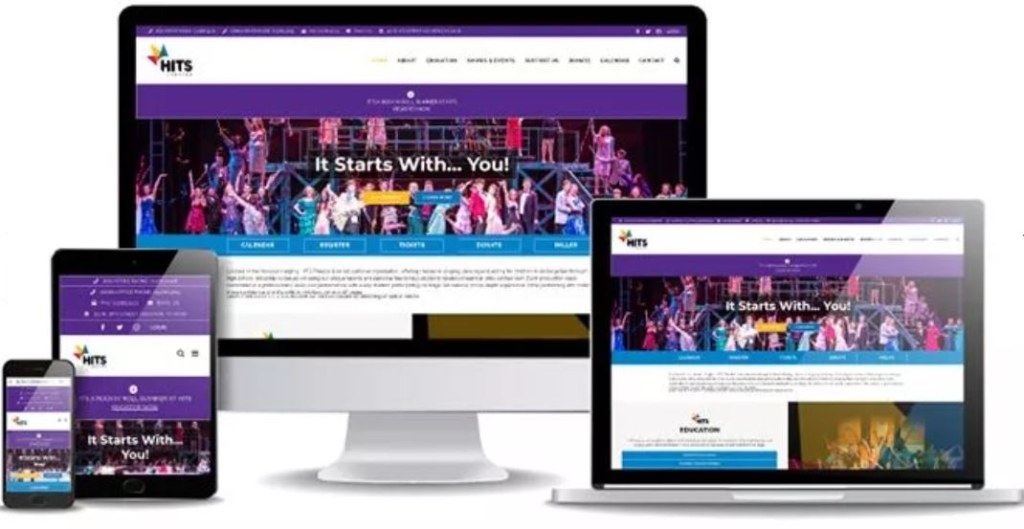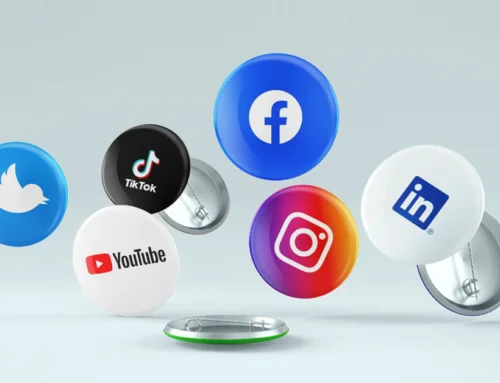Summary
Check out these signs that it’s time to consider revamp your online presence.
The online world is fast paced. Maintaining your website is critical for keeping your business relevant and competitive. Adding new content to your website gives people more reasons to return to your site. Search engines also reward websites with fresh content by sending more web searchers to those updated websites. However, it might not always be clear when a website overhaul is necessary, rather than just adding new content or refreshing the existing. Here are some signs that it’s time to consider revamp your online presence.
1. Outdated Design
Web design trends evolve quickly. A website that looked cutting-edge five years ago might now look like a relic. If your website’s design feels outdated, it’s likely to leave a poor first impression on visitors. Modern web design prioritizes clean, minimalist layouts, intuitive navigation and mobile responsiveness. We still refer to getting your key content “above the fold,” meaning visitors don’t have to scroll down to see that prime content. However, this consideration is less of an issue today as many, especially those that need to share a lot of information, embrace the scroll. (I honestly think that Apple was one of the early adopters of this trend.) If your site lacks these elements, it’s time to consider an update.
2. Slow Load Times
Website speed is crucial. In an age where users expect instant access to information, a slow-loading website can deter potential customers. If your site takes longer than three seconds to load, you risk losing visitors. Tools like Google PageSpeed Insights can help you identify speed issues and provide recommendations for improvement.
3. High Bounce Rates
Bounce rate refers to the percentage of visitors who leave your website after viewing a particular page. A high bounce rate often indicates that your website isn’t engaging or relevant to visitors. Analyzing your site’s bounce rate using tools like Google Analytics can provide insights into user behavior and highlight areas in need of improvement. This said, bounce rate has a bad wrap and there are some aspects that people overlook. If your Contact page has a high bounce rate, it may be because site visitors are getting your phone number or email, and then leaving your website. That’s not a bad thing, if those people engage with your organization in some way. Looking at which pages have a high bounce rate and thinking about which action you want people to take on that page is a more strategic approach.
4. Poor Mobile Experience
With the majority of web traffic now coming from mobile devices, a mobile-friendly website is no longer an option. If your site isn’t optimized for mobile, you’re likely losing a significant portion of potential visitors. Ensure your website uses responsive design techniques to provide a seamless experience across all devices. Responsive design means that the website’s format and functionality adjust based on the site visitor’s screen size, orientation and even device type. The example below shows how a website that we designed for HITS Theatre displays differently on various devices.
5. Low Conversion Rates
A key metric for any business website is its conversion rate—the percentage of visitors who take a desired action, such as making a purchase, filling out a contact form or downloading an asset. If your conversion rates are low or have declined over time, it might indicate that your website isn’t effectively guiding visitors through the sales funnel.
6. Outdated Content
Content is king, but only if it’s relevant and up-to-date. If your website contains outdated or irrelevant information, it can tarnish your credibility and trustworthiness. Regularly updating your content to reflect the latest industry trends, news, and best practices is critical for maintaining an authoritative online presence. We typically recommend that clients publish a new blog post at least once a month and embed links in each blog post to other relevant pages in their websites. Not only does that add new content to the site, but it also nudges clients to examine the other web pages and consider updates and improvements to those pages.
7. Inconsistent Branding
Your website is often the first interaction potential customers have with your brand. In fact, according to Invoca, “81% of retail shoppers conduct online research before buying.”1
B2B purchasers aren’t any different. SalesLion confirms that: “According to a recent survey, 77% of B2B purchasers reported that they would not even speak to a salesperson until they had done their own research. This highlights the importance of businesses having a strong online presence and providing valuable, informative content to potential customers.”2
If your site’s branding is inconsistent with your other marketing materials or doesn’t accurately reflect your current brand identity, it can confuse visitors and weaken your brand message. A website refresh can ensure consistent and cohesive branding across all platforms. That’s much more than just updating text and a few graphics on your website.
8. Poor Search Engine Rankings
Search engine optimization (SEO) is critical for driving organic traffic to your website. If your site isn’t ranking well on search engines like Google, it might be due to outdated SEO practices. Refreshing your website with a focus on modern SEO techniques—such as improving site speed, optimizing for mobile and regularly updating content—can enhance your visibility in search results and drive more and qualified visitors to your site.
9. Difficult Navigation
User experience (UX) is paramount. If visitors find it challenging to navigate your website, they’re unlikely to stay long or return in the future. Clear, intuitive navigation menus and well-organized content can greatly improve the user experience and keep visitors engaged.
10. Security Concerns
Website security is more important than ever, especially with increasing cyber threats. If your site isn’t secure, it can put both your business and visitors at risk. Ensuring your website uses HTTPS, regularly updating software and plugins, and implementing robust security measures can protect your site from cyberattacks and build trust with your audience.
11. Lack of Integration with Modern Tools
The digital landscape is constantly evolving. New tools and technologies emerge regularly. If your website doesn’t integrate with the latest tools—such as social media platforms, customer relationship management (CRM) systems, or e-commerce solutions—you might be missing out on valuable opportunities to enhance user experience and streamline operations. Of course, there’s no magic list of the tools that every website should embrace. For some, online chat makes a lot of sense. For others, having the Instagram feed actually display on the website works well. Ask your web expert which pages are performing well versus those that are underperforming. Then explore options for tools and technologies that could improve the user experience. Don’t be afraid to experiment.
12. Competitor Advancements
Not only are your prospects checking out your website, but they’re also researching your competitors’ sites. How up-to-date our your competition’s websites? What do you find helpful on their sites and what seems to provide a better experience for a website visitor? If your competitors have recently updated their websites and you notice they’re offering a more modern, user-friendly experience, it’s likely a good investment for you to follow suit. Staying competitive means continually assessing and improving your online presence to meet or exceed industry standards.
Conclusion
Overhauling your website isn’t just about keeping up with the latest trends. It’s about providing the best possible experience for your visitors. If any of the points mentioned resonate with your current website situation, it’s likely time for a refresh. Investing in a modern user-friendly website can pay off significantly by enhancing your brand image, improving user engagement, and driving conversions.
By staying proactive and regularly assessing your website’s performance, you can ensure it remains a valuable asset in your digital marketing strategy. After all, being stagnant is not an option. Refreshing your website might just be the key to unlocking new growth and opportunities for your business. If you’d like help assessing your website and possibilities for a simple website update or a completely new design, contact Tell Your Tale Marketing & Design.
Sources:
1. Dereck Andersen, “45 Statistics Retail Marketers Need to Know in 2024” in Invoca blog, November 9, 2023. Accessed October 30, 2024.
2. “77% of B2B Buyers Do Their Own Research Before Speaking to Sales” on SalesLion.com, Accessed on October 30, 2024.













Leave A Comment